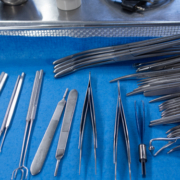Advances in Plastic Surgery
Plastic surgery has undergone remarkable transformations in recent years, with technological advances and innovative techniques revolutionizing the field. These innovations not only enhance the outcomes of procedures but also contribute to improved safety, reduced recovery times, and increased patient satisfaction. In this article, we will explore some of the cutting-edge innovations in plastic surgery that are shaping the future of the industry.
1. 3D Printing Technology: Precision in Reconstruction
One of the most groundbreaking innovations in plastic surgery is the integration of 3D printing technology. This technology allows surgeons to create precise, customized implants and prosthetics tailored to individual patient needs. In reconstructive surgery, 3D printing has been particularly beneficial, enabling surgeons to replicate intricate anatomical structures with remarkable accuracy. This has led to more natural-looking results and improved functionality for patients undergoing procedures such as breast reconstruction or facial reconstruction.
2. Augmented Reality (AR) in Surgical Planning
Augmented Reality is making its mark in plastic surgery by offering surgeons a dynamic and interactive tool for preoperative planning. With AR, surgeons can visualize and manipulate three-dimensional images of a patient’s anatomy in real time. This allows for more accurate planning of incisions, implant placement, and other surgical interventions. By enhancing surgical precision and reducing the margin of error, AR is contributing to safer surgeries and better outcomes.
3. Non-Surgical Innovations: Thread Lifts and Injectable Fillers
Advancements in non-surgical procedures have gained significant popularity in recent years. Thread lifts, for example, involve the use of dissolvable threads to lift and tighten sagging skin, providing a minimally invasive alternative to traditional facelifts. Injectable fillers, on the other hand, have seen continuous improvement with the introduction of new formulations and techniques, offering more natural and longer-lasting results without the need for surgery.
4. Regenerative Medicine: Stem Cells and Tissue Engineering
The integration of regenerative medicine into plastic surgery is opening new possibilities for tissue repair and regeneration. Stem cell therapy is revealing its potential to enhance wound healing and promote the regeneration of damaged tissues. Tissue engineering involves the creation of artificial tissues and organs using a combination of cells, biomaterials, and growth factors. These approaches hold promise for improving the outcomes of reconstructive and cosmetic surgeries.
5. Robot-Assisted Surgery: Precision and Efficiency
Robot-assisted surgery is becoming increasingly prevalent in plastic surgery, offering surgeons enhanced precision and control. These robotic systems can perform complex procedures with smaller incisions, resulting in less scarring and faster recovery times. The integration of robotics is particularly beneficial in procedures such as microsurgery, where precision is crucial for success.
Combining Advances in Plastic Surgery with Trusted Methods
Plastic surgeons continue to embrace innovations and advances to deliver improved results and reduced recovery times.
In addition, by using the very best existing technology in plastic surgery, such as hand-crafted surgical instruments that are designed to last decades and offer exceptional performance, the plastic surgeon can embrace both tried-and-tested and innovative solutions for optimum outcomes.
From SuperCut scissors, that offer precise cutting to the very tip, to double action rongeurs that enable the jaws to stay in orientation, high quality surgical instruments that are specifically designed for the task at hand remain one of the most powerful assets for the plastic surgeon. Click here to find out more about how we can support advances in plastic surgery.







